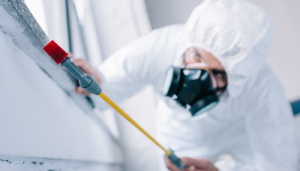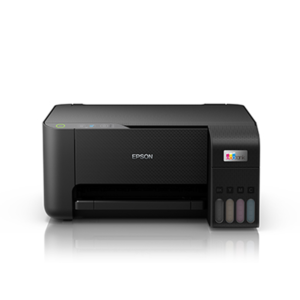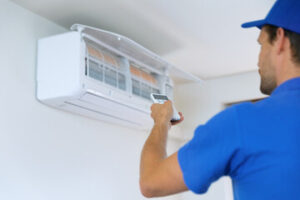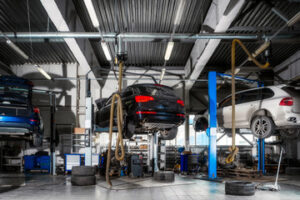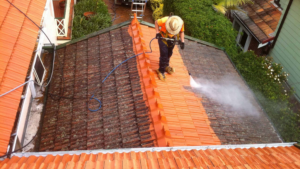Auto Electrician work with a wide variety of electrical systems and components. They must be able to identify problems and repair them quickly. They also need to be able to communicate effectively with customers.
They often work in vehicle garages, general mechanics’ shops, and car dealerships. They may specialize in repairing particular parts or vehicles.
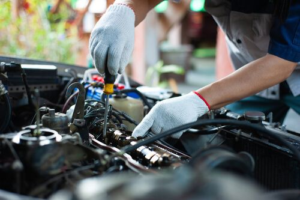
An auto electrician repairs electrical systems in motor vehicles. They use diagnostic equipment, hand tools, and specialized electrical instruments to fix vehicles’ alternators, air conditioning systems, lights, and wiring. They also repair new electronic devices used in vehicle safety systems. Auto electricians must have a keen eye for detail and precision to ensure their work meets the highest standards.
Modern cars are packed with electronics, making driving much more comfortable and convenient. They have 30 or more computers that control navigation, heating and cooling, dashboard indicators, braking systems, and engine management. However, these devices can be troublesome if they experience a malfunction or fail completely. This is when auto electricians come in to rescue the day.
This career is perfect for people who love taking apart things and looking at how they work. It can be very rewarding to find out the mechanics behind a car’s complex electrical system. The work is physically demanding, requiring constant lifting and the use of heavy tools. It also requires you to wear protective clothing like overalls and gloves. Sometimes, you may even need to wear goggles to protect your eyes. Depending on the industry you work in, your colleagues may include motor vehicle fitters, breakdown engineers, and maintenance supervisors.
In addition to repairing electrical systems, automotive electricians also conduct maintenance and inspections. They are responsible for identifying problems and providing the client with an estimated cost and repair time. They also perform electromechanical maintenance, such as testing the battery and charging system, and checking the headlight beam alignment. They also install accessories such as GPS navigation and parking sensors.
Auto electricians must be able to communicate with clients effectively and solve problems. They often deal with complex and technical information, so they must be able to explain it in an easy-to-understand way. They also need to be able to follow technical manuals and schematics accurately. This is an important skill because any errors could cause a system failure and put the client’s safety at risk.
Salary
Auto electricians are a type of automotive mechanic that specializes in the installation and maintenance of electrical systems contained within motor vehicles. They often work for service centers or dealerships and must have knowledge of a wide range of car models and manufacturers. Their duties include using advanced diagnostic equipment and hand tools to inspect, repair, and replace wiring and electronic devices. They also communicate with customers regarding the status of their repairs and provide ETAs on completion.
As the cars that people drive continue to get more complex and rely on battery power, the demand for qualified auto electricians will increase. This is especially true because many modern cars are hybrid or electric and need special care to ensure that they run safely and efficiently. Those interested in becoming an auto electrician can pursue a vocational college course or complete a trade apprenticeship to develop their skills.
The salary of an auto electrician can vary, depending on the area in which they work and the level of experience they have. Those new to the field can expect to make less, while experienced auto electricians can command salaries of up to $44 an hour. An auto electrician can also earn a bonus for meeting certain performance goals.
An auto electrician can work in a variety of environments, including electronics retail stores, car dealerships, and repair shops. They must be comfortable working with greasy tools and parts, and may need to wear protective gear like overalls or safety goggles. In addition, they need to be able to lift and use heavy equipment. Lastly, they must be willing to work irregular hours, including weekends and holidays.
While hard skills are critical for this job, soft skills are just as important. For example, an auto electrician must be able to work well with their colleagues and customers. They must also be able to communicate clearly and effectively in written and verbal form.
Depending on their specific employer, an auto electrician may need to pass a background check and drug screening before starting work. These requirements are important to protect their personal and professional lives, as well as the safety of their customers and co-workers. Moreover, a good auto electrician should be able to handle stressful situations with a positive attitude.
Requirements
An auto electrician is a person who works on the electrical wiring and components of motor vehicles. He or she repairs the problems that affect these vehicles and can also replace defective parts. The job requires a great deal of mechanical aptitude and extensive knowledge of electronics. Auto electricians must be able to use diagnostic equipment to pinpoint the source of problems. They also need to know how to read wiring schematics, which can help them locate specific wires within a vehicle.
The requirements for an automotive electrician vary depending on the country and local laws. Some employers may require an associate’s degree or certificate from an accredited institution, while others may simply accept a high school diploma or GED certificate. It is also important to have on-the-job experience in a garage or car shop before applying for an apprenticeship.
A qualified auto electrician can work on various types of vehicles, including cars, trucks, buses and trolleys. They also have the option of specializing in a particular area such as air conditioning or braking systems. They also have the ability to move into a managerial role in a vehicle factory or at a workshop.
The most important qualifications for an auto electrician are the necessary skills and a strong desire to learn. They should be able to solve problems and make repairs quickly and efficiently. They should also be able to communicate effectively with customers and other technicians to explain technical diagnoses and needed repairs.
Unlike other trades, auto electricians can sometimes enter the profession without first getting a postsecondary education. This can be especially beneficial for people with family or financial obligations, who can still gain the necessary skills through on-the-job training or an apprentice program.
An auto electrician can be found in many industries, but the most common is the automotive industry. Their duties include diagnosing the cause of a problem, repairing and installing electronic systems in cars, trucks and buses. These systems include heating and cooling, ignition, dashboard indicators, and braking systems. They also repair the electrical wiring and components of heavy-duty vehicles, such as those used in construction or mining.
Career outlook
An auto electrician is a specialist that installs, repairs and maintains electronic systems in vehicles. They work on various components of a vehicle including lighting, air conditioning and the car’s ignition system. They also use specialized tools and communicate with customers regarding issues and ETAs on their repairs. This career is an excellent option for people who are interested in working on cars but don’t want to become a mechanic.
The auto electrician career outlook is promising as it has a faster growth rate than other electrical jobs. Those interested in this trade should consider attending an automotive electrical course at their local college. This program will prepare students for an apprenticeship and teach them the skills needed to succeed in the field. It will also teach them about the health and safety concerns of their occupation.
After completing an automotive electrical course, you will be able to apply for an apprenticeship with a local auto shop or dealership. The qualifications required for this position include a trade certificate, a valid driver’s license and a physical fitness test. You should also have the ability to read technical drawings and make calculations.
An automotive electrician will need to be familiar with a variety of vehicle makes and models. They may also need to work on in-car systems, such as those used for navigation and audio players. Some may even specialise in one particular model or type of car if they work for a specific manufacturer.
Auto electricians must be comfortable using power and hand tools. They should also be familiar with industry equipment and machines, such as welding. They may also need to learn the ins and outs of soldering. An auto electrician can expect to spend a lot of time on their feet and will need to be physically fit.
Unlike other car repair and maintenance careers, an auto electrician doesn’t conduct general care inspections or repair other parts of the vehicle. Instead, they primarily focus on the electrical systems of vehicles. These specialized electricians can be found in auto service centers, garages, custom car shops and other automotive businesses. They can also be hired by car manufacturers to work on prototypes and new model vehicles.
